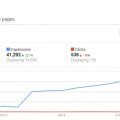1)
The site must be as usable in nongraphical environments as it is in the best and lates browsers by Netscape, Microsoft, Opera, and others. Its content and basic functions must be available to any browser or device; its layout should work in any reasonably CSS-savvy browser.
2)
Markup must balidate against the XHTML 1.0 Transitional spec and must avoid presentational elements. We are separating structure from presentation.
3)
CSS must validate and should be as compact and as logically arranged as possible.
4)
To help meet our goal of delivering content and basic functions in almost any conceivable browsing environment, the site should strive to be seamlessly accessible.
5)
The site must deliver a recognizably branded look and feel without squandering visitor or server bandwidth on bloated markup, excessively complex scripts, or needless images. The site must not waste resources, but it must possess style.
6)
The site should offer visual interactivity so that it feels like a living thing.
7)
Wherever possible, equivalents to dynamic elements should be provided for the benefit of those who are using text browsers or other nontraditional devices.
8)
The site should provide user customization options without losing its brand character in the process.
9)
Text should be easy and pleasurable to read and should be made the focus of the site, which is a reading, rather than a shopping, clicking, or button-pushing site.
10)
navigation should be clear, intuitive, and obvious. It can and probably should have sove visual panache, but it must also work in nonvisual environments. Visitors who access the web in linear fashion should be able to skip right past it. If the navigation can be achieved using structural elements, such as the components of an unordered list, so much the better.






